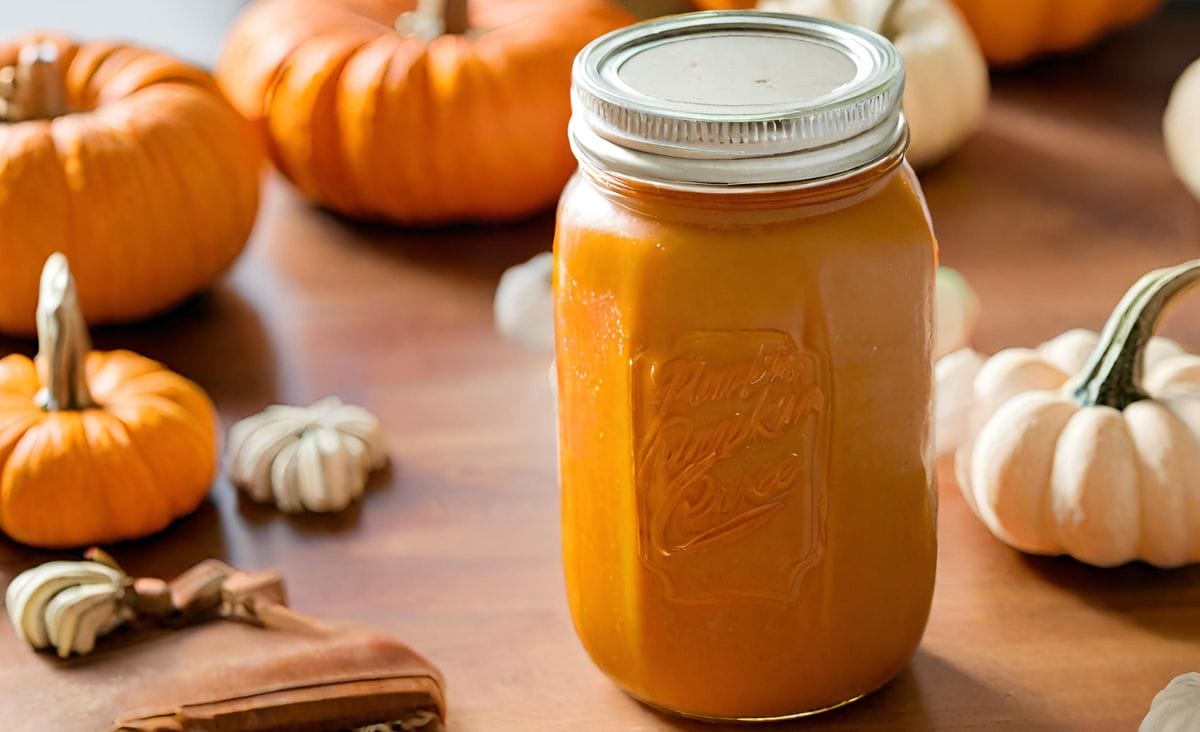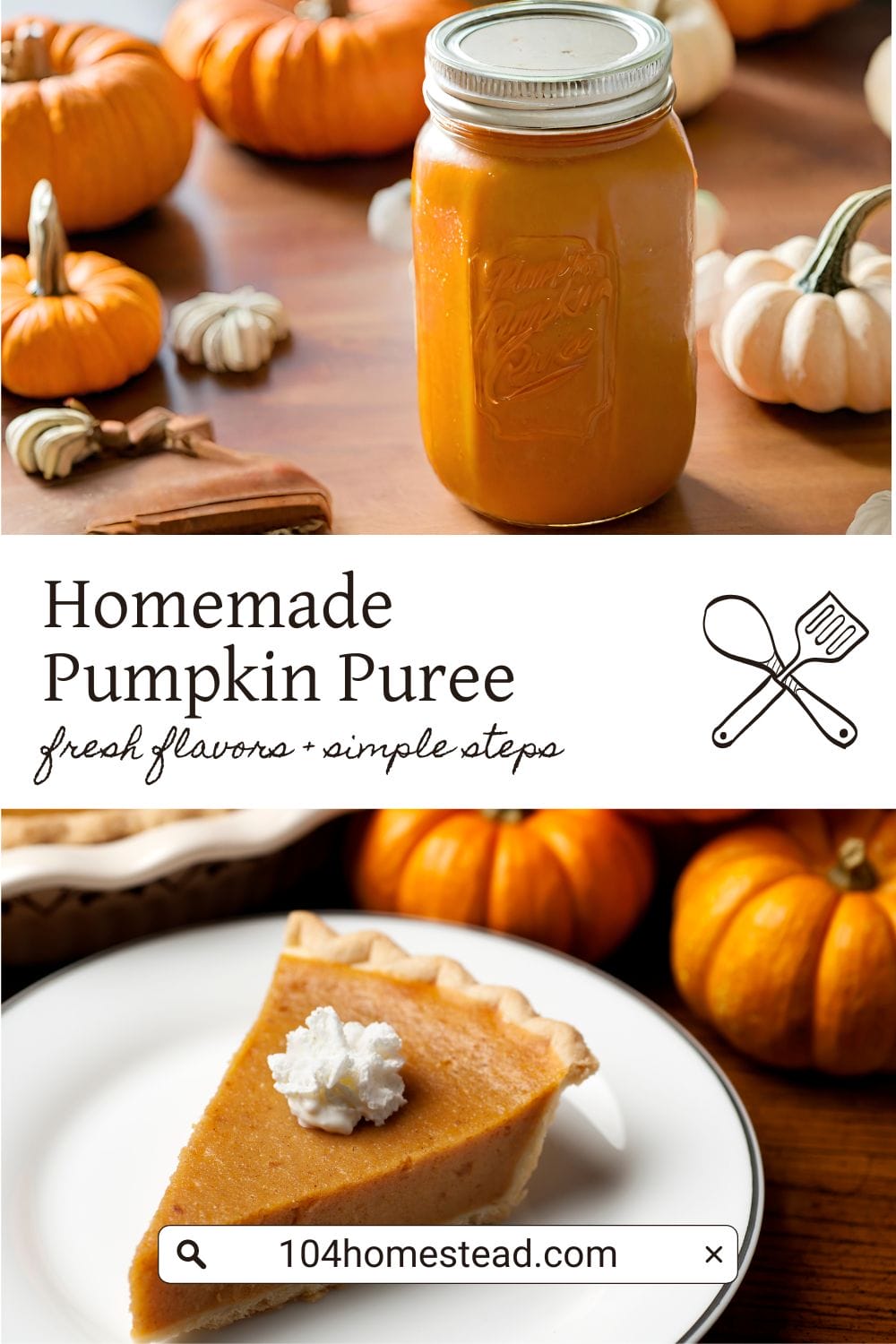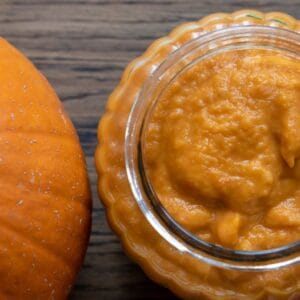Fresh Flavors, Simple Steps: A Guide to Making Pumpkin Puree
Enjoy the flavors of fall with my guide to homemade pumpkin puree. From garden harvest to delightful dishes, savor the essence of the season.

Making your own pumpkin puree is a simple way to turn a simple vegetable into a culinary adventure. There is no need to buy pumpkin puree in a can; today I am going to show you how to make organic pumpkin puree in your own kitchen.
Find out how to make a versatile pumpkin puree that will improve the taste of your food. Every step, from picking the right pumpkin to making the delicious final blend, is a celebration of simplicity, sustainability, and the fun of making something from scratch. Warm up your ovens and let us learn how to make pumpkin puree. After all, a pumpkin is more than just a vegetable when you have it in your hands; it is the base for making something delicious at home.
The Best Pumpkins for Puree
Do you have pumpkins growing in your garden? When picked at their ripest, these garden treasures are full of healthy nutrients and bright colors. By connecting with the seasons on a deep level, growing your own pumpkins turns cooking into a celebration of nature’s bounty.
Sugar Pumpkins
For pumpkin puree, sugar pumpkins are best because their flesh is sweeter and smoother, which gives the puree a better taste and texture overall. Their smaller size and fine-grained texture make them perfect for making a rich, velvety pumpkin puree at home.
Pie Pumpkins
Because their flesh is dense and sweet, pie pumpkins make great pumpkin puree. They are also great for baking and cooking. They make a delicious, velvety homemade puree that improves the taste of many different foods because their flavor is stronger and their texture is smoother.
Let’s get started making homemade pumpkin puree.
Making puree is a relatively quick process – about 2 hours from start to finish.
Step #1 – Preparation
Preheat your oven to 350 °F. Remove the stem from your pumpkin and slice it in half from top to bottom. My pumpkin is homegrown and massive (if possible, choose a smaller, 5-8 pound pumpkin). Get a bowl, a helper, and a metal spoon. Allow your helper to go crazy pulling out the pumpkin guts.

If the helper is under the age of ten, you may want to perform a quick check to ensure that all guts have been properly removed. You should also remove any sections that are less than ideal. Because our pumpkin grew so large, it tipped over, and the moisture from the grass caused damage to the back. I simply cut those pieces out.
If you have a compost bin, or even better, chickens, you’ll want to save those pumpkin guts. Pumpkin seeds contain cucurbitacin, which may act as an herbal dewormer for your chickens, and the pumpkin guts are loaded with nutrients. My compost bin is located in the chicken yard, so the girls get to enjoy our kitchen scraps.
Step #2 – Cooking
Place the cleaned out pumpkin, open-side down, in a roasting pan or casserole dish with 1 inch of water. Place it in a preheated oven for 45 minutes to an hour. If your pumpkin is large, it might take a little longer. After 45 minutes, try spearing with a fork. When the fork pierces the pumpkin’s skin smoothly, it is finished.
Step #3 – Blending
Allow your pumpkin to cool to a comfortable temperature. When the pumpkin has cooled enough to handle, scrape out the flesh, leaving the skin behind. I discovered that scooping from side to side lowers the risk of accidentally gouging the skin. As you scoop out the flesh, transfer it to a blender or food processor. Puree until it is smooth.
That’s it! Because it was steamed, there might be more fluid than you are used to. If you plan to bake with your puree, you may want to press out some of the liquid with a cheesecloth first. If you are using it in a soup or as a meat dressing, the flavors will be much richer if you use steamed puree with the extra liquid.
Alternatives to Steaming
You can make pumpkin puree in a lot of different ways, and while steaming is one of the best, each has its own benefits.
Baking
Process: Cut the pumpkin into halves or quarters, remove seeds and strings, and place the pieces on a baking sheet. Roast in the oven until the flesh is tender.
Advantages: Baking can enhance the natural sweetness of the pumpkin, and it’s a hands-off method that allows you to multitask while it cooks.
Microwaving
Process: Cut the pumpkin into smaller pieces, place them in a microwave-safe dish with a bit of water, and cook on high in short intervals until the flesh is soft.
Advantages: Microwaving is the quickest method, saving you valuable time. It’s an excellent option for those looking to streamline the process without compromising the quality of the puree.
Choosing the Right Method
When choosing a cooking method, think about how much time you have, what tools you have in the kitchen, and your own personal tastes. Any way you do it will make a tasty puree, so feel free to try them all and pick the one that works best for you.
Note: Regardless of the method chosen, the key is to ensure that the pumpkin flesh becomes tender, making it easy to scoop out and blend into a smooth puree.
Storing Your Homemade Pumpkin Puree
Once you are done making your own pumpkin puree, it is important to keep it fresh for future cooking projects. After making your own pumpkin puree, here are three good ways to keep it fresh:
Canning
For long-term storage, consider canning your pumpkin puree. Follow standard canning procedures, ensuring that your jars are properly sterilized and sealed. This method not only extends the shelf life but also allows you to have a convenient supply of pumpkin puree throughout the year.
Refrigeration
If you plan to use your pumpkin puree within a shorter timeframe, refrigeration is a good option. Store the puree in airtight containers or glass jars, keeping it in the refrigerator for up to one week.
Freezing
Freezing is an excellent way to preserve the freshness of your pumpkin puree for an extended period. Portion the puree into freezer-safe containers, or use ice cube trays for smaller servings. Label containers with the date to keep track of freshness. When properly stored, frozen pumpkin puree can maintain its quality for several months.
Tip: Leave some headspace in your containers before freezing, as liquids tend to expand when frozen.
Recipe Inspirations with Pumpkin Puree
Your homemade pumpkin puree can be used to add flavor and warmth to a wide range of dishes. Here are some delicious pumpkin puree recipe ideas to get you started:
- Creamy Pumpkin Soup: Craft a velvety and comforting pumpkin soup, garnished with toasted seeds or a swirl of cream, for a delightful fall-inspired starter.
- Pumpkin Pancakes or Waffles: Elevate your breakfast game with fluffy pumpkin-infused pancakes or waffles, perfect for a leisurely weekend brunch.
- Pumpkin Pasta Sauce: Infuse pumpkin puree into a rich, creamy pasta sauce with herbs and spices to give your pasta dishes a seasonal twist.
- Pumpkin Hummus: Blend pumpkin puree with chickpeas, tahini, and spices to create a unique pumpkin hummus, ideal for dipping or spreading on your favorite crackers.
- Pumpkin Smoothie: Boost your smoothie game by adding a scoop of pumpkin puree to your favorite blend of fruits, yogurt, and a sprinkle of warming spices.
- Pumpkin Chili: Enhance the depth of your chili by incorporating pumpkin puree, adding a touch of sweetness and a velvety texture to this hearty dish.
- Pumpkin Bread or Muffins: Bake a batch of moist pumpkin bread or muffins for a delightful treat that captures the essence of autumn in every bite.
- Pumpkin Ice Cream: Indulge in a homemade pumpkin ice cream, blending the creamy goodness of pumpkin with autumn spices for a frozen delight.
You should also be sure to check out my favorite fall recipes that feature homemade puree: The Perfect Pumpkin Pie Recipe for Any Occassion, Chewy Pumpkin Cookies with Maple Icing, and my Ginger Snaps with Harvest Pumpkin Dip.
Frequently Asked Questions
If you’ve found value in this blog post and enjoyed reading it, why not share it with your Pinterest community? Pin the image below and spread the love!

Now, it’s your turn to share—have you tried making your own pumpkin puree, and if so, what delightful creations have you whipped up in your kitchen? I’d love to hear about your experiences and favorite pumpkin-inspired dishes in the comments below!

Homemade Harvest Pumpkin Puree
This post may contain paid links. If you make a purchase using the links in this recipe, I may earn a commission.
Equipment
- 1 Sharp Knife
- 1 Roasting pan or casserole dish
- 1 Metal spoon
- 1 Blender or food processor
Ingredients
- 1 Pumpkin 5-8 lbs
Instructions
- Preheat your oven to 350°F (175°C).
- Cut the pumpkin(s) in half from top to bottom, removing the stem.1 Pumpkin
- Scoop out the seeds and stringy bits using a metal spoon. Save seeds for roasting if desired.
- Check for imperfections in the pumpkin flesh, removing any undesirable sections.
- Compost the pumpkin guts or use them for other purposes.
- Place the cleaned pumpkin halves open-side down in a roasting pan or casserole dish with 1″ of water.
- Bake in the preheated oven for 45 minutes to an hour or until the pumpkin flesh is tender when pierced with a fork.
- Allow the pumpkin to cool, then scoop out the flesh, leaving the skin behind.
- Add the pumpkin flesh to a blender or food processor and puree until smooth.
- Transfer the puree to airtight containers or glass jars for storage.

